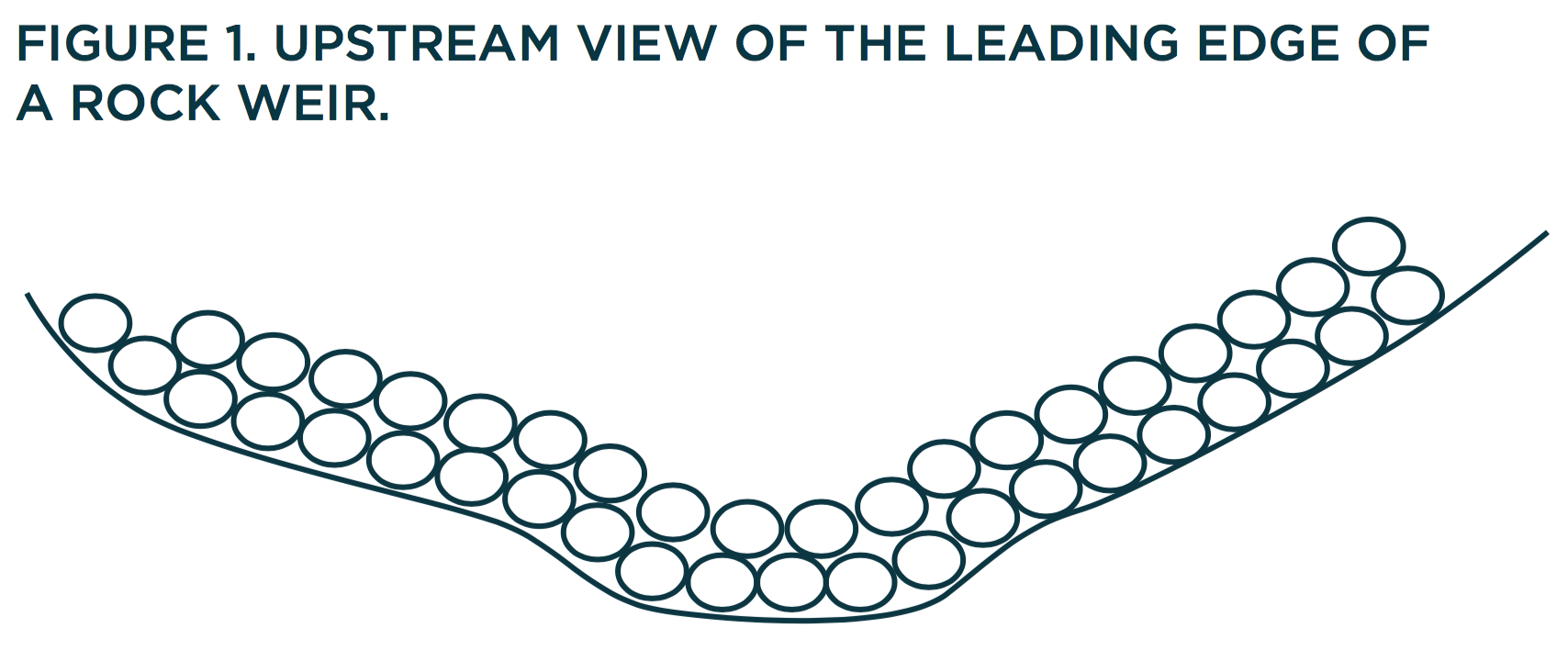Rock Weirs and Flumes Can Prevent Erosion
Rock weirs and flumes are effective options for preventing gully or ditch formation and for stopping the growth of existing gullies or ditches.
Rock weirs and flumes are effective options for preventing gully or ditch formation and for stopping the growth of existing gullies or ditches. Rock weirs or flumes are placed in earthen waterways where water flow is concentrated such as pond spillways, ditches along sloping roads, waterways through sloping crop fields, and locations where terraces release water into ponds or ditches.
A rock weir is a relatively small, pervious dam-like structure that slows water flow and releases water in a controlled manner. A series of rock weirs may be necessary to prevent erosion in relatively long sloping waterways. A rock flume is a chute-like structure where rocks line the bottom and sides of the entire steep portion of a waterway. Rocks should extend up the sides a little higher than water flow and splash levels in a flume. When an earthen waterway is especially steep, a rock flume is usually more appropriate than a series of weirs.

A rock weir or flume should be higher on the sides than in the middle and wide enough so water cannot travel around it (Figure 1). A weir should direct water flow over and through its middle. Where lateral slopes on the sides of a weir are slight, earthen terraces can be used to guide water over and through a weir to prevent water from flowing beside it.
To stop growth of an existing gully, a rock weir should cover or seal the head or overfall, which is the drop-off where water falls into the gully (Figure 2). A gully with a series of overfalls may need a rock weir over each overfall. When covering the overfall of an existing gully, the top ledge above the overfall should be covered with a layer of rock. Continuous rock should slope from the top ledge to the bottom of the gully. No soil under a weir or flume should be visible through the rocks.


The rock size needed in a weir or flume depends upon the maximum water volume and velocity. Weirs handling small water volumes and velocities can utilize 6- to 8-inch rocks. Weirs with moderate water volumes and velocities may need 12-inch riprap. Weirs with relatively high water volumes and velocities, such as waterways and spillways draining more than 100 acres, may require 18-inch riprap. Weirs should be designed to handle water volumes and velocities during maximum runoff events.
Smaller rocks can be placed and shaped in weirs and flumes by hand or using a tractor with a loader. Twelve-inch riprap can be placed and shaped by hand when building small weirs and flumes. However, 12-inch riprap in large weirs and flumes, and 18-inch riprap in all situations are best placed and shaped using an excavator track hoe with an opposable thumb attachment in combination with the bucket, or alternatively, with a hydraulic grapple mechanism.
The most common mistakes I see in weir and flume construction involve using rocks that are too small for the maximum water volume and velocity in a waterway; using an inadequate amount of rocks; and incorrectly shaping a weir, flume and/or associated terraces to force all water to flow over and through the rocks. Rocks that are too small will be washed away, causing a weir or flume to be ineffective. An inadequate amount of rocks or an incorrectly shaped weir or flume (and associated terraces when needed) allow water to flow around the structure and usually cause gully formation alongside the weir or flume.
Rock, labor and machine hire expenses for weir construction are not cheap, but neither are land and topsoil that are conserved by weirs. Over time, most properly constructed rock weirs tend to disappear and blend into the landscape as soil and plant particles collect in the rocks and plants grow through the rocks. A properly constructed rock weir or flume is a permanent solution for preventing or stopping gully formation.



Comment